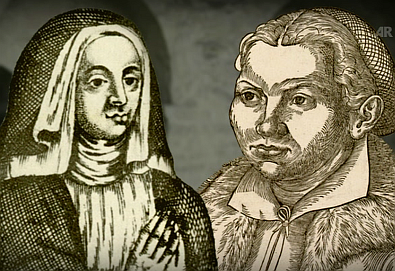1515: The considerably younger Katharina von Bora enters the Nimbschen Convent in Saxony, after early schooling at the Augustiner-Chorfrauenstift (an Augustinian nunnery). She, too, learns to read, write, acquires knowledge of Latin, and some instruction in housekeeping. The days in the convent are long and strictly regimented.
During this period, Martin Luther begins to look more critically at the Church. In 1517, he publishes his famous 95 theses against the sale of indulgences. The first drumroll, to be followed by many others. Luther wants reforms, and this also applies to the monasteries. He doubts that monastic life is willed by God or even makes sense. According to his new doctrine, the faithful can appeal directly to God, without the need for any priests, nuns or monks to act as intermediaries. The abbeys are therefore superfluous and can be closed. And this occurs in the Protestant territories and towns. The abbeys are dissolved, one after the other.
The nun Katharina von Bora herself becomes a follower of the Reformation. She decides upon a dramatic step. In 1523, she flees the convent, together with eight other nuns, concealed on a cart behind barrels of herring. Martin Luther had sent the wagon. The nuns arrive in Wittenberg, the centre of the Reformation.
Caritas Pirckheimer, Abbess of the Convent of St. Clara in Nuremberg, on the other hand, thinks and acts quite differently. As the Reformation reaches the southern German city in 1525, she deeply fears changes to her convent. She values the advantages of life there. Apart from social security, it offers her the opportunity to use her intellectual abilities. As she speaks Latin (the world language) fluently, she can communicate with scholars from all over the world. Some of her letters go as far afield as Italy and France.




